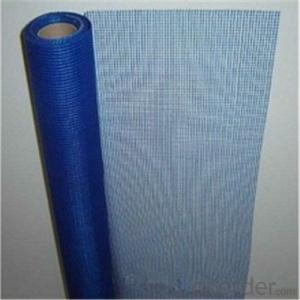Fiberglass rolls are a versatile and essential component in boat construction and repair. They are known for their strength, durability, and lightweight properties, making them the perfect material for nautical reinforcements. Whether you’re a seasoned boat builder or a DIY enthusiast, understanding the benefits and applications of fiberglass rolls can significantly improve your boat’s performance and longevity.
The Magic of Fiberglass Rolls
Fiberglass rolls are made from a composite material consisting of glass fibers embedded in a resin matrix. This combination results in a material that is not only incredibly strong but also resistant to various environmental factors such as water, sunlight, and temperature changes. The magic of fiberglass rolls lies in their ability to provide structural support and protection to boats without adding significant weight.
Why Choose Fiberglass Rolls for Boats?
There are several reasons why fiberglass rolls are the go-to choice for many boat enthusiasts and professionals. Let’s dive into some of the key benefits:
1. Strength and Durability: Fiberglass rolls offer unparalleled strength and durability. They can withstand the rigors of the sea and resist wear and tear, ensuring your boat remains in top condition for years to come.
2. Lightweight: One of the most significant advantages of using fiberglass rolls is their lightweight nature. This allows for better fuel efficiency and improved maneuverability, giving you the freedom to explore the open waters with ease.
3. Corrosion Resistance: Fiberglass rolls are resistant to corrosion, making them ideal for saltwater environments. They won’t rust or degrade over time, ensuring your boat’s structural integrity remains intact.
4. Customizability: With fiberglass rolls, you have the flexibility to create custom shapes and sizes to fit your specific boat needs. This allows for a tailored approach to boat construction and repair, ensuring a perfect fit every time.
5. Cost-Effectiveness: Compared to other materials, fiberglass rolls are relatively inexpensive and offer excellent value for money. They provide a cost-effective solution for both new boat construction and existing boat repairs.
Applications of Fiberglass Rolls in Boats
Fiberglass rolls can be used in a variety of applications throughout the boat, from the hull to the deck and everything in between. Here are some common uses:
1. Hull Construction: Fiberglass rolls are often used in the construction of the boat’s hull, providing a strong and lightweight base that can withstand the forces of the water.
2. Deck Reinforcement: The deck is a critical part of the boat that needs reinforcement to support the weight of passengers and equipment. Fiberglass rolls can be used to strengthen the deck and ensure it remains sturdy and reliable.
3. Mast and Rigging Support: For sailboats, the mast and rigging are essential components that require robust support. Fiberglass rolls can be used to reinforce these areas, ensuring they can handle the stress of sailing.
4. Non-Slip Surfaces: Fiberglass rolls can be used to create non-slip surfaces on the boat, providing a safer environment for those on board.
5. Custom Parts and Accessories: Whether you need a custom seat, storage compartment, or any other boat part, fiberglass rolls can be molded and shaped to fit your specific requirements.
The Art of Working with Fiberglass Rolls
Working with fiberglass rolls may seem daunting at first, but with the right knowledge and tools, it can become a rewarding experience. Here are some tips to help you get started:
1. Safety First: Always wear appropriate safety gear, including gloves, goggles, and a respirator when working with fiberglass rolls and resin.
2. Preparation is Key: Before you begin, make sure the surface you’re working on is clean, dry, and free of any contaminants. This will ensure proper adhesion of the fiberglass rolls.
3. Cutting and Shaping: Fiberglass rolls can be cut to size using a utility knife or scissors. You can also shape them using a heat gun or by wetting the material and molding it by hand.
4. Applying Resin: When applying resin, make sure to do so evenly and follow the manufacturer’s instructions for the best results.
5. Patience is Paramount: Allow the resin to cure properly before moving on to the next step. This may take several hours or even days, depending on the product and environmental conditions.
6. Finishing Touches: Once the resin has cured, you can sand, paint, or varnish the fiberglass rolls to achieve the desired finish.
Embracing the Fiberglass Revolution
The use of fiberglass rolls in boat construction and repair has revolutionized the industry, offering a lightweight, strong, and cost-effective solution. By embracing this material, you’re not only enhancing your boat’s performance but also contributing to a more sustainable and eco-friendly approach to boating. So, the next time you’re out on the water, remember the magic that lies beneath the surface, courtesy of fiberglass rolls.
In Conclusion
Fiberglass rolls have proven to be an invaluable resource in the world of boat building and maintenance. Their versatility, strength, and ease of use make them a popular choice among professionals and hobbyists alike. As you set sail on your next adventure, remember the importance of proper reinforcement, and let fiberglass rolls be your trusted companion on the high seas.
Whether you’re looking to build a new boat from scratch, repair an existing one, or simply enhance its performance, fiberglass rolls are a fantastic option to consider. With their numerous benefits and applications, they truly are the unsung heroes of the nautical world. So, go ahead and give your boat the reinforcement it deserves with fiberglass rolls – your vessel will thank you for it!

